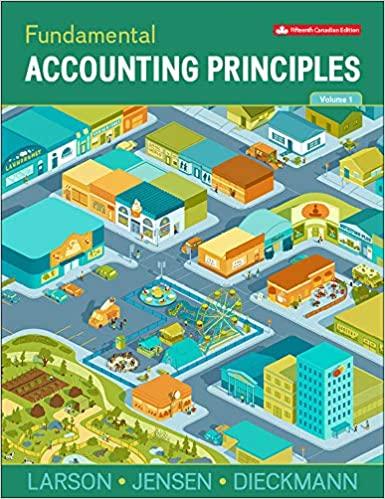At the beginning of June 2017, Brett Wilson created a moving company called Frog Box Company. The
Question:
At the beginning of June 2017, Brett Wilson created a moving company called Frog Box Company. The company had the following transactions during July, its second month of operations:
July
1. Purchased office equipment for $9,000 and a truck for $56,000 by signing a long-term note payable.
2. Purchased land for an office. The land was worth $124,000, which was paid with $40,800 cash and a long-term note payable for the balance.
3. Purchased a used portable building with $21,000 cash and moved it onto the land.
5. Paid $9,600 cash for the premiums on two one-year insurance policies.
9. Provided services to a client and collected $3,200 cash.
12. Purchased additional office equipment for $6,500. Paid $700 cash and signed a long-term note payable for the balance.
15. Completed $3,750 of services for a client. This amount is due within 30 days.
20. Completed another hauling job for $9,200 on credit.
21. Received a bill for rent on a specialized hauling truck that was used to complete the job done on July 20. The $1,300 rent must be paid within 30 days. 22. Collected $5,000 from the client described in the transaction on July 20.
23. Paid $1,600 wages to an assistant.
24. Paid the account payable created in the transaction of July 21.
25. Paid $1,425 cash for some repairs to the truck.
26. Wilson withdrew $3,875 in cash from the business for personal use.
27. Paid $1,600 wages to an assistant.
28. Paid $800 cash for advertising in the local newspaper during July.
29. Received $1,400 from a client for services to be performed in August.
Required
1. Prepare journal entries to record the transactions. Use page 1 for the journal.
2. Set up the following general ledger accounts (use the balance column format or T-accounts), entering the balances brought forward from June 30, 2017: Cash (101) $75,000; Accounts Receivable (106) $950; Prepaid Insurance (128) $275; Trucks (153) $20,800; Office Equipment (163) $1,200; Building (173) $-0-; Land (183) $-0-; Accounts Payable (201) $725; Unearned Revenue (233) $-0-; Long-Term Notes Payable (251) $7,000; Brett Wilson, Capital (301) $83,825; Brett Wilson, Withdrawals (302) $600; Revenue (401) $8,400; Wages Expense (623) $780; Truck Rental Expense (645) $230; Advertising Expense (655) $75; and Repairs Expense (684) $40.
3. Post the entries to the general ledger accounts and enter the balance after each posting. 4. Prepare a trial balance as of the end of the month.
Accounts payable (AP) are bills to be paid as part of the normal course of business.This is a standard accounting term, one of the most common liabilities, which normally appears in the balance sheet listing of liabilities. Businesses receive... Accounts Receivable
Accounts receivables are debts owed to your company, usually from sales on credit. Accounts receivable is business asset, the sum of the money owed to you by customers who haven’t paid.The standard procedure in business-to-business sales is that...
Step by Step Answer:

Fundamental Accounting Principles Volume 1
ISBN: 9781259259807
15th Canadian Edition
Authors: Kermit Larson, Tilly Jensen, Heidi Dieckmann





